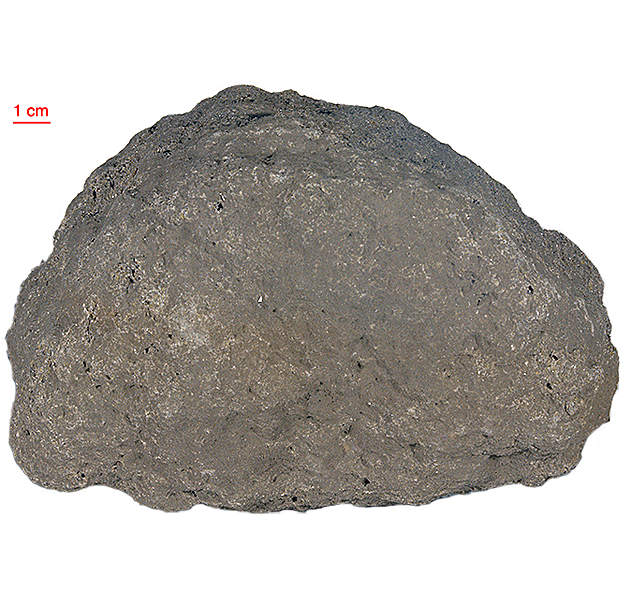
Fact sheet
15058 is one of the largest basalt samples returned from the Moon. Large phenocrysts of pigeonite dominate the texture. The crystals are long (up to 2 cm in length) and highly zoned (rotation 2). Olivine is rare and restricted to the cores of large pigeonite crystals. Clusters of radiating plagioclase crystals are common. Vugs contain pyroxene and plagioclase. The accessory mineral assemblage includes ilmenite, spinel, fluorapatite, chlorapatite and cristobalite (rotation 2).
The sample weighed 2672 grams before analysis and has been dated at 3.358±0.2 billion years (Ar/Ar).
Further details of this and other Apollo samples are here: http://curator.jsc.nasa.gov/lunar/
The Apollo 15 landing site was in the Apennine Highlands, and close to Hadley Rille — a long, narrow winding valley. Approximately 76 kg of lunar material, including soil, rock, core-tube and deep-core samples, were returned to Earth.
This mission was the first flight of the Lunar Roving Vehicle which allowed the astronauts to venture further from the Lunar Module than in previous missions. During three periods of extravehicular activity, or EVA, on July 31st, and August 1st and 2nd, Scott and Irwin completed a record 18 hours, 37 minutes of exploration, travelling 17.5 miles, in the first car that humans had ever driven on the Moon.
Apollo 15 was launched on 26 July 1971.






